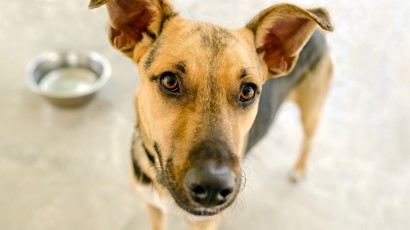How to Perfect Your Dog’s Poos

Let’s face it – one of the worst parts of owning a dog is cleaning up the poo. So, how can you ensure firmer dog stools to make your life as a dog owner more pleasant?
Feed a premium diet
Premium dry food diets, such as Black Hawk, contain higher quality ingredients compared to many of the cheaper alternatives found at the supermarket. If your dog is eating kibble containing a lot of poorly digestible ingredients, then a higher proportion of the food will end up as waste in your dog’s poo. What this means is that, in terms of poor quality food, what goes in tends to come out as undigested faecal matter.
Dogs fed poor quality diets often need to go to the toilet more often, and their poos tend to be less consistent in character with a more sloppy consistency. Sloppy poo can be tricky to deal with while taking your dog for a walk! Premium dog foods tend to be highly digestible, so you don’t need to feed as much. More food is absorbed by their gastro-intestinal system, meaning smaller and firmer dog stools.
Stop feeding table scraps
Dogs with highly varied diets and fast dietary changes tend to also have varied stools. This can mean that sometimes they are too firm, making them strain to defecate (constipation) and sometimes they become too soft (diarrhoea).
We all know how tempting it is to give in to those ‘pleading eyes’ and feed tit-bits throughout the day from our plates or to help avoid food waste in the kitchen, but this can lead to inconsistent bowel motions.
Every time a new type of food is fed to your dog, their digestive system is being asked to process something different, and this isn’t always an easy thing to adapt to. The result could be something smelly and sloppy!
So remember, the perfect poo is more likely to be achieved by avoiding too much variation in your dog’s diet.
Avoid bones
Well-meaning owners may offer their dog a bone to encourage chewing or to give their dog a more ‘instinctive’ diet, closer to what their wild wolf ancestors would have eaten. The trouble is that when dogs chew, they have very little side-to-side movement of their jaws so the huge shearing forces placed on bones when chewed, can cause fractures of the major chewing teeth (carnassials)1. These tooth fractures also occur in wild dogs and wolves2,3, which can be life-threatening in animals relying on hunting for their survival.
Aside from that, bones can also contribute to constipation, which is a painful experience for dogs. One outcome I see in vet practice after the consumption of too many bones, is the need for an enema, which may require a general anaesthetic.
For these reasons, I do not recommend giving dogs bones.
Transition slowly
Remember it is wise to make any diet changes over 5-7 days, to allow the digestive system to adjust to the new food’s ingredients slowly. This gives the dog the opportunity to accept the change in smell, size, shape, format and taste of the new diet.
So if we slowly increase the proportion of the new food while phasing out the old one (as per the diagram below), the body will slowly be able to adapt to processing the new ingredients.

Taking a gradual approach means that inconsistent poos are less likely. The ability to easily pick-up your dog’s stool will be maintained, or even improved if a high quality food such as Black Hawk is fed in the long-term.
So remember, having perfect poos not only makes cleaning up after your dog a lot easier, but is also an indicator that your dog’s digestive system is in top health.
Sources:
1. Soltero-Rivera M, Elliott MI, Hast MW et al. Fracture Limits of Maxillary Fourth Premolar Teeth in Domestic Dogs Under Applied Forces.Front Vet Sci. 2019;5:339.
2. Losey RJ, Jessup E, Nomokonova T, Sablin M. Craniomandibular trauma and tooth loss in northern dogs and wolves: implications for the archaeological study of dog husbandry and domestication.PLoS One. 2014;9(6):e99746.
3. Steenkamp G, Gorrel C. Oral and dental conditions in adult African wild dog skulls: a preliminary report.J Vet Dent. 1999;16(2):65–68.



